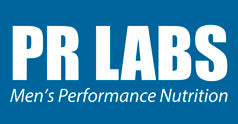What Is the Normal Size of Prostate Glands Compared to Enlarged?
As men get older, it becomes more critical for them to be proactive about their health. This includes regular checkups with a primary care doctor to ensure everything from their heart to their hormones is performing within normal range. However, one area that often might be overlooked is a man's prostate gland. This is a small gland located between the groin area and bladder, responsible for producing and transporting seminal fluid in the male reproductive system. It is a reasonably small organ in the body that young men often do not have much concern over or even know much about, but as men age into their 40s and above, routine checks for enlarged prostates become frequent and sometimes necessary.
A common problem a prostate can develop in later life is becoming enlarged, posing other health risks and general discomfort. But how and why does this happen? Are there factors contributing to this and putting specific individuals at risk? Understanding the process of examining a normal size of the prostate gland compared to an enlarged one can help better determine the physical well-being of men's health.
Normal Size of Prostate
On average, the normal size of prostate glands are comparable to that of a walnut or a ping-pong ball in younger men at around 25 grams in weight. With age, the prostate can grow up to the size of a tennis ball, weighing about 30 to 35 grams. In much older men, it can continue to grow even larger.
Enlarged Prostate
Since the prostate continues to grow, it can become too large to the point where it can obstruct other body functions, primarily the bladder. An enlarged prostate is usually identified as having grown almost three times larger than a normal-sized one, weighing about 80 grams. The increase in size puts pressure on the urethra and can make it difficult and uncomfortable to urinate properly or completely. It can also put your bladder and kidneys at risk for infection.
Why Does the Prostate Enlarge?
Prostate enlargement, often diagnosed as benign prostatic hyperplasia (BPH), is believed to be caused by hormonal changes in the body, particularly testosterone, and cell growth changes in the testicles. It should also be noted that while BPH is common and can bring out discomfort to quality of life, an enlarged prostate is usually not life-threatening and has no link to developing prostate cancer. In fact, men who have had their testicles removed at a younger age, likely due to testicular cancer, do not develop BPH later in life.
Most men will experience an enlarged prostate in their lifetime, but not all of them will experience symptoms. The risks do increase as men get older, though, with almost half of all men over 50 and 90% of men over 80 being diagnosed with BPH.
The most common symptoms of BPH are frequent or urgent needs to urinate, inability to empty the bladder, weak urine streams, and dribbling at the end of urination. Less common symptoms are blood in the urine, inability to urinate at all, or urinary tract infections.
Who Is At Risk?
Most men will experience an enlarged prostate, with or without symptoms of complications. Certain conditions that could make some more at risk than others are those who might have a family medical history of prostate complications, those who live a sedentary lifestyle, and those who are overweight or obese. With high body fat percentages, hormone levels can increase in the blood and prompt prostate cells to grow, so maintaining a well-balanced diet and healthy lifestyle can help lessen BPH.
How is An Enlarged Prostate Determined?
Patients who have developed and begin experiencing symptoms of an enlarged prostate will meet with a physician and go through a digital rectal examination. This is a process where a doctor will insert a gloved, lubricated finger into the rectum and feel for any tenderness, lumps, and hard spots. From there, a diagnosis will determine any other complications the prostate might have.
How Is It Treated?
Mild cases of BPH often do not need much treatment other than active surveillance and are monitored through regular checkups with a urologist. Treatments such as minimally invasive surgical procedures and prescription drugs that help relax the prostate muscles and alleviate pressure on the bladder are also great options. Surgical techniques vary in each person's case, with minimally invasive ones removing small amounts of tissue around the urethra to more invasive ones compressing or removing large amounts of tissue from a highly enlarged prostate to shrink the overall size.
Even though most men will have an enlarged prostate as they get much older, its complications tend to be mild and treatable. Maintaining an active lifestyle, getting routine health checkups, and educating yourself on the topic can help you or someone in your life manage the symptoms and possibly avoid serious problems from it altogether. Another great way to take care of your prostate health is to start taking supplements designed for men. If you are looking around for prostate supplements, you’ve come to the right place. PR Labs has a potent and effective supplement to support prostate health. Prost-P10x is a urologist-formulated natural prostate and urinary health support supplement. Remember that prostate health is critical to men's overall health, and the sooner you start making it a priority, the better off you will be in the long run!
Join Our Community & Save 10% Off Your First Order
We’ll send you a coupon code for 10% off your first order. Stay on our list
and we’ll keep you updated with tips for optimal health, new product launches, sales, and more!




